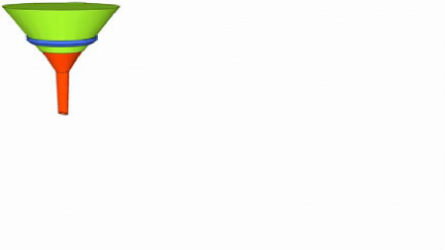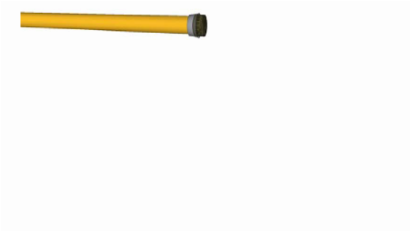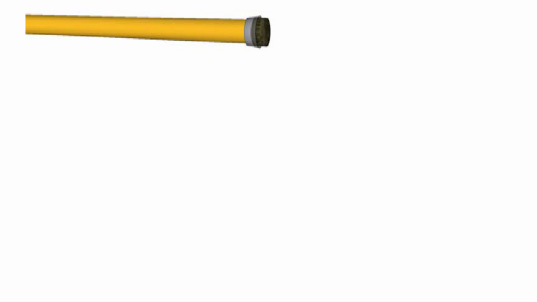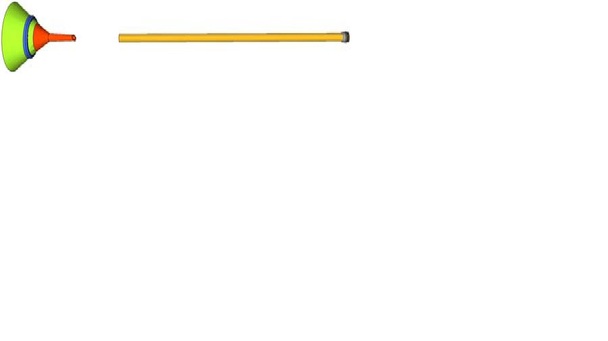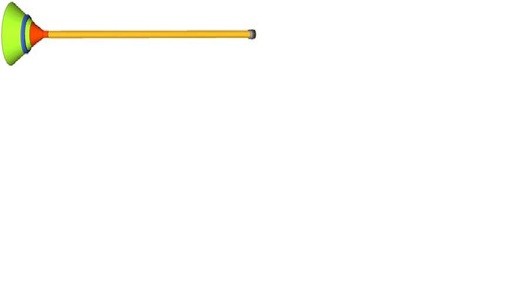How does the Doctor hear your heartbeat?
Materials in the box
1. One green plastic tube
2. 1 plastic funnel
3. 1 rubber band
4. 1 balloon
5. 1 circular foam piece
Materials from your house
1. Scissors
2. Tape
How do I begin?
1. Cut off 1" from stem of the balloon, starting from the mouth end. Fig 1
2. Stretch the cut end of the balloon tightly across the funnel, making a flat membrane across the funnel. Fig 2
3. Secure the balloon tightly over the funnel with a rubber band. Adjust if necessary. Fig 3.
4. Secure ear bud foam over the end of the rubber tubing and secure well with tape. Fig. 4a + 4b.
5. Insert funnel spout into uncovered end of rubber tubing till it fits snugly. Fig 5
6. Hold the foam end of the tubing to your ear and if necessary, remove the tape from the foam and readjust for a comfortable fit. Do NOT push it into your ear canal! You will damage your ears!
7. Lightly stroke the balloon membrane. Can you hear anything? Stroke progressively softer until you can barely hear anything.
8. Hold the foam end of the tubing to your ear and place the balloon membraned funnel on your chest right over your heart. Press firmly. Move the funnel in 1/2" steps and observe which area/ position produces the loudest heartbeat.
9. Count the number of breaths you take in a minute.
10. Run in place for about two minutes and time yourself again.
11. Compare your heartbeats before and after your run. Which activity produced more heartbeats?
What just happened?
The tube shaped ear canal directs sound waves to the ear drum. Placing an end of the plastic tubing to the ear canal, helps us to hear the faint stroking of the balloon membrane. The outer ear has a wide funnel that directs sound waves into our narrower inner ear, amplifying the sound waves in the process. The plastic funnel connects both a wide and a narrow opening to amplify sound waves. The balloon material over the funnel behaves in a similar manner as our own ear drum. The vibrations due to the sudden closing of our heart valves are transmitted through the chest to move the balloon membrane in and out due. This vibrates the air present in the plastic tubing and sends these sound waves to our ear. Clothes will minimize the "amplitude" (volume) of these vibrations, hence Doctors place the stethescope head on bare skin when listening to our heart.
1. One green plastic tube
2. 1 plastic funnel
3. 1 rubber band
4. 1 balloon
5. 1 circular foam piece
Materials from your house
1. Scissors
2. Tape
How do I begin?
1. Cut off 1" from stem of the balloon, starting from the mouth end. Fig 1
2. Stretch the cut end of the balloon tightly across the funnel, making a flat membrane across the funnel. Fig 2
3. Secure the balloon tightly over the funnel with a rubber band. Adjust if necessary. Fig 3.
4. Secure ear bud foam over the end of the rubber tubing and secure well with tape. Fig. 4a + 4b.
5. Insert funnel spout into uncovered end of rubber tubing till it fits snugly. Fig 5
6. Hold the foam end of the tubing to your ear and if necessary, remove the tape from the foam and readjust for a comfortable fit. Do NOT push it into your ear canal! You will damage your ears!
7. Lightly stroke the balloon membrane. Can you hear anything? Stroke progressively softer until you can barely hear anything.
8. Hold the foam end of the tubing to your ear and place the balloon membraned funnel on your chest right over your heart. Press firmly. Move the funnel in 1/2" steps and observe which area/ position produces the loudest heartbeat.
9. Count the number of breaths you take in a minute.
10. Run in place for about two minutes and time yourself again.
11. Compare your heartbeats before and after your run. Which activity produced more heartbeats?
What just happened?
The tube shaped ear canal directs sound waves to the ear drum. Placing an end of the plastic tubing to the ear canal, helps us to hear the faint stroking of the balloon membrane. The outer ear has a wide funnel that directs sound waves into our narrower inner ear, amplifying the sound waves in the process. The plastic funnel connects both a wide and a narrow opening to amplify sound waves. The balloon material over the funnel behaves in a similar manner as our own ear drum. The vibrations due to the sudden closing of our heart valves are transmitted through the chest to move the balloon membrane in and out due. This vibrates the air present in the plastic tubing and sends these sound waves to our ear. Clothes will minimize the "amplitude" (volume) of these vibrations, hence Doctors place the stethescope head on bare skin when listening to our heart.



